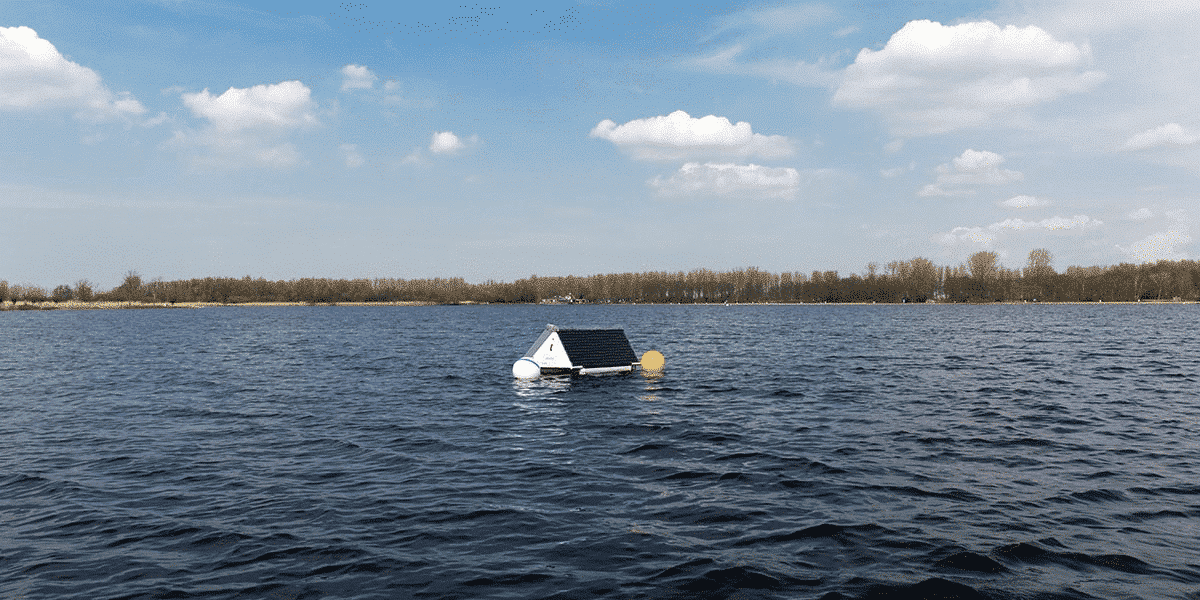As heatwaves and storms intensify, it becomes evident how threatening climate change is for our planet. Surprisingly, algal blooms exacerbate its effects, emphasizing the need to tackle this hidden problem. When they affect water bodies, algal blooms unexpectedly transform them into a source of greenhouse gas (GHG) emissions and therefore an environmental threat. LG Sonic, based in the Netherlands, provides effective control against harmful algal blooms in lakes all over the world, without the use of chemicals. After recent studies on GHG emissions from lakes, it was found that the implementation of our technology led to an almost 20% reduction in methane (CH4) emissions.
Among the various greenhouse gases (GHG) that contribute to global warming, methane (CH4) plays a significant role, as it is 34 times more polluting than carbon dioxide (CO2) over a 100-year period. CH4 emissions in lakes are the result of anaerobic breakdown of organic matter in the sediments, in the presence of methanogenic bacteria. When algal blooms further affect the water quality and health of the sediment, CH4 emissions increase further as oxygen levels decline.
Understanding Methane Production and Negative Effects of Greenhouse Gasses
Algae thrive in lakes where there is a lot of sun and nutrients available. At first, their growth causes a positive impact, leading to a brief decrease in the concentration of CO2 in water, which algae absorb in the process of photosynthesis. However, after they die and sink to the bottom of the water body, they release organic matter into the water. Bacteria present in the water consume these substances as a source of energy and nutrients. Some bacteria produce methane gas (CH4), leading to a rise in its levels in the water and eventually in the atmosphere.
After carbon dioxide, methane is the second largest contributor to climate change and environmental degradation among greenhouse gases. Therefore, it poses a global threat to the well-being and sustainability of all life on the planet. In fact, its potential to trap heat in the atmosphere is even greater than that of CO2. The increase in the Earth’s average temperature, known as global warming, has numerous harmful effects, such as: melting of glaciers that causes sea-level rise and coastal flooding, changes in weather patterns, disruption of ecosystems and loss of biodiversity, acidification of oceans, shifts in agricultural productivity, and health risks to humans.
LG Sonic is Revolutionizing Methane Emission Estimation
Estimating methane flux emissions is crucial for predicting and mitigating climate change effects, meeting environmental regulations, conserving ecosystems, and protecting public health. However, traditional methods used for measuring these emissions, such as field sampling, have proven to be costly and limited in terms of spatial and temporal coverage.
Seeking to overcome these shortcomings, LG Sonic has developed a groundbreaking alternative method of estimating methane emissions from eutrophic water bodies using satellite imagery. The approach makes methane emission estimations more cost-effective and accessible since it eliminates the need for in-situ equipment and allows for the determination of historic values as well. By leveraging cutting-edge technology and scientific expertise, LG Sonic has transformed methane emission monitoring, paving the way for more efficient and sustainable environmental management practices.
Remarkable Reductions in CO2 Emissions Achieved with LG Sonic’s Equipment
Rio Guandu is a drinking water reservoir in Rio de Janeiro, that provides drinking water to 9 million people. For two summers, CEDAE (Companhia Estadual de Águas e Esgotos) customers reported an earthy taste and odor when drinking water from the state-owned company’s tap. To overcome this problem, in 2022 CEDAE has installed 8 MPC-Buoy systems in Rio Guandu.
The new solutions guaranteed an improvement in the quality of the water collected for treatment at the Guandu Water Treatment Station (WTP), eliminating changes in the smell and taste of the water caused by geosmin. This also resulted in reduced chemical use inside the treatment plant. The majority of the savings – around 90% – came from the reduced use of activated carbon: its application will be reduced by 95%. In addition to coal, the use of products such as chlorine (27%) and aluminum sulfate (5%) was also reduced.
Using remote sensing technology, GHG emissions were determined before and after implementation of the MPC-Buoy. Before intervention, the dam emitted a substantial amount of methane. However, with the MPC-Buoy systems in place, water quality was improved, and methane and CO2 emissions were reduced by around 20%.
“Up to 20% less Methane release from LG Sonic treated lakes.”
Approximately fifty trees are needed to absorb 1 ton of CO2. To better understand the environmental impact, this reduction is equivalent to planting and maintaining approximately 924 trees. Furthermore, the CO2 savings are comparable to the emissions from 1 passenger flying for 202 hours. These results demonstrate the effectiveness of LG Sonic’s equipment in reducing greenhouse gas emissions and driving positive environmental impact.
Year | Oxidative CO2 Emission (Tons/Year) | Methane Diffusive Emission (Tons/Year) | Methane Ebullitive Emission (Tons/Year) | Total Methane Emission (Tons/Year) | Total CO2/year |
2019 | 1 | 4.57 | 0.4 | 4.97 | 124.25 |
2020 | 0 | 4.55 | 0.4 | 4.94 | 123.5 |
2021 | 0 | 4.47 | 0.39 | 4.86 | 121.5 |
2022 | 0 | 3.96 | 0.34 | 4.31 | 107.75 |
2023 | 0 | 3.73 | 0.32 | 4.06 | 101.5 |
